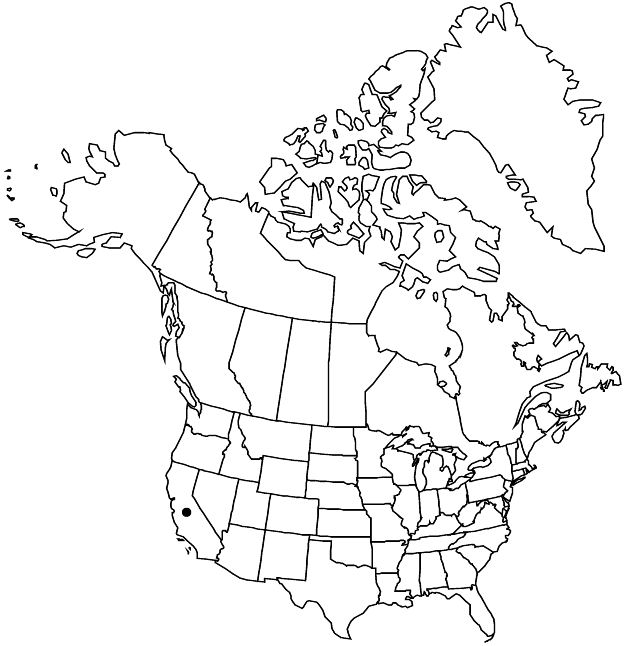Ceanothus cuneatus var. ramulosus
Fl. Francisc., 86. 1891.
Shrubs, (0.5–) 1–2.5 m. Stems erect, ascending, or spreading; branchlets gray to grayish brown. Leaf-blades of fascicled and non-fascicled leaves cupped, widely oblanceolate, widely obovate, or orbiculate, 5–15 × 3–12 mm, length usually less than 2 times width, margins usually entire, rarely 1–4-toothed, apex rounded, truncate, or retuse. Flowers: sepals, petals, and nectary lavender to blue. Capsules 5–6 mm wide. 2n = 24.
Phenology: Flowering Feb–May.
Habitat: Rocky slopes, often on serpentine, chaparral, pine woodlands.
Elevation: 10–800 m.
Discussion
Variety ramulosus occurs disjunctly in the San Francisco Bay area (Alameda, Contra Costa, Lake, Marin, Napa, Santa Cruz, and Sonoma counties) and on coastal slopes in western San Luis Obispo and Santa Barbara counties. In both areas, plants occur primarily but not exclusively on serpentine soils. Some specimens in the San Francisco Bay area are intermediate to var. cuneatus, while others in San Luis Obispo and Santa Barbara counties suggest intergradation with var. fascicularis. Plants on Point Sal Ridge in western Santa Barbara County are low-growing, less than one meter, and have ascending to spreading stems, features that are retained in cultivation.
Selected References
None.
Lower Taxa
"thick" is not a number.

